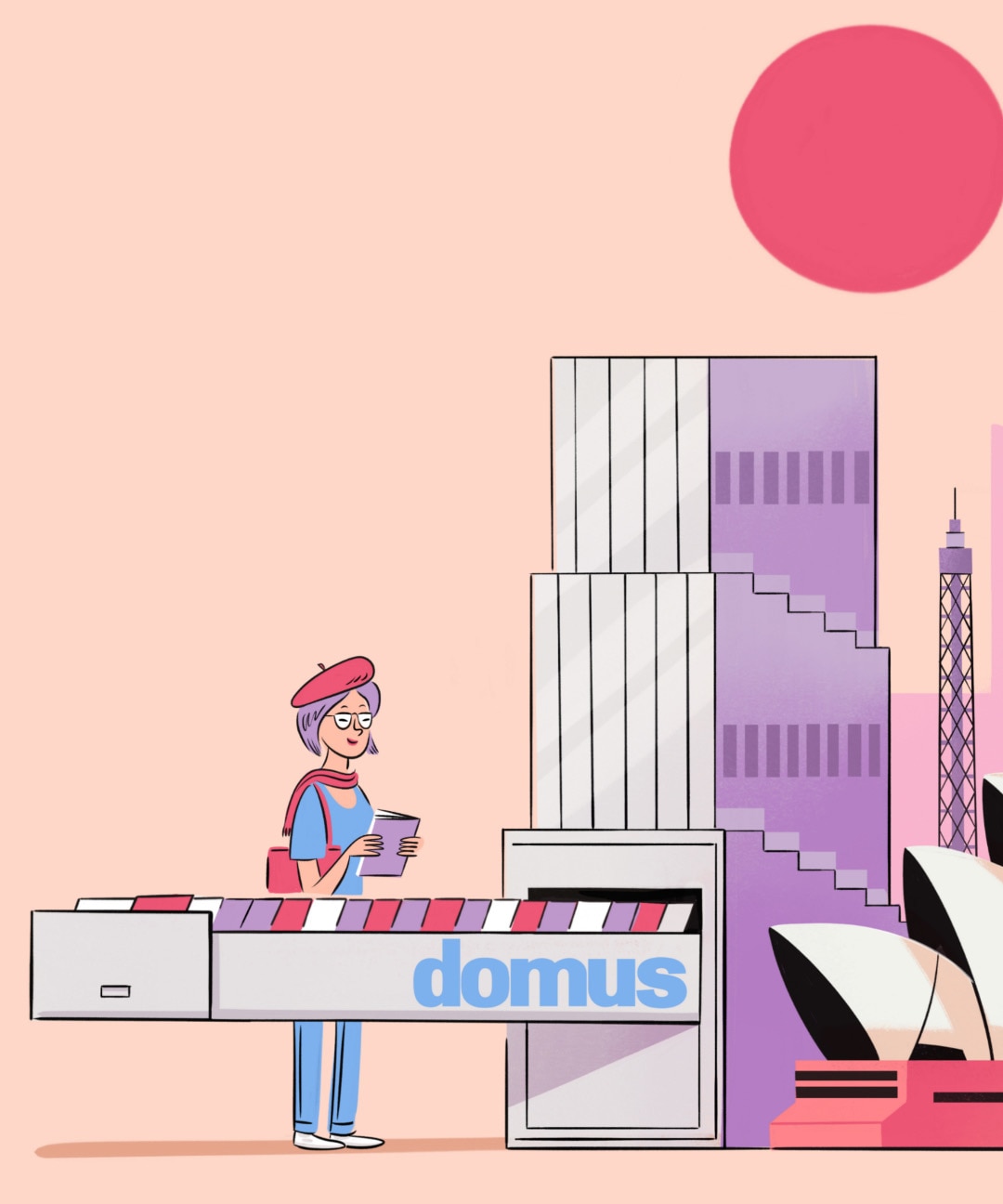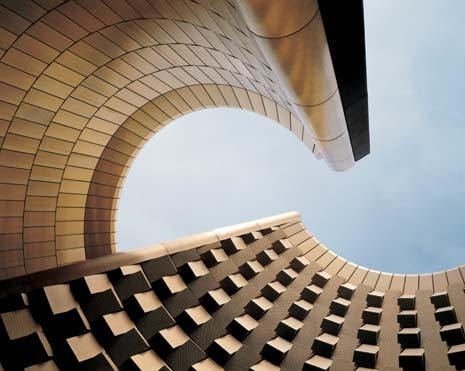A short drive east of Clermont-Ferrand, Vulcania – the European Park of Volcanism – is an encounter with a relatively young, extinct volcanic landscape. Constructed on the Chaine des Puys, a series of volcanic hills in the Auvergne, this confrontation between high culture and mass tourism presents, in a playful and interactive way, a synthesis of current scientific understanding of volcanoes and earth science.
The product of France’s tradition of political architectural patronage, Vulcania is the brainchild of Giscard d’Estaing, the former French president, who since 1986 has been the President of the Regional Council of the Auvergne. Funded by the Regional Council, the State and the European Union, the park was designed by Hans Hollein. He co-operated with Atelier 4, the landscape designer Gilles Clément and the scenographer Rainer Verbizh. Together they have succeeded in creating a successful attraction that works on a more profound level than is typical of such projects.
Volcanic events here are embedded in the memory of the earth; there is none of the direct effect on our collective consciousness of a Pompeii or Herculaneum. By creating a large, 22-metre-high cone, its exterior clad in dark basalt and its interior with a golden metallic relief that captures sunlight during the day and a beam of artificial light at night, Hollein freed himself from the necessity of merely excavating the largest part of the project below ground level. ‘Absolute architecture’ was among the definitions Hollein and his friend the sculptor Walter Pichler gave architecture in the Pop years. Construction or building, to their mind, was always a cultural act.
At Vulcania, Hollein has succeeded at last in achieving his long-cherished dream of excavation, as proposed in his Salzburg museum project a decade ago. Burrowing into the earth was something that Hollein has long wanted to do, and here it is symbolically appropriate while also minimizing the impact on a landscape that many locals wished to see protected.
Hollein is an architect of theatre and display. His claim to fame rests memorably with his museum and exhibition designs, notably buildings in Mönchengladbach and Frankfurt and exhibitions like Traum und Wirklichkeit in Vienna. His Venice Architecture Biennale (1996) was conceived in the vein of this project – architecture in terms of seismic activity, albeit in the cultural sense. His use of an excess of signs succeeds in confronting us with an evocation of our deepest, most elemental fears and hopes while focussing on fire, water, air and earth.
At Vulcania, nearly 1,000 metres above sea level, Hollein has erected a temple to Vesta and Vulcan: a tumulus, as large as an Etruscan burial mound, full of tunnels and passages, a mole’s burrow, enhanced at eye level all around by natural light from above and surfaces of stratified lava. Largely buried underground – except the tall cone, divided into two vertical parts – it connects heaven and earth, simulating fire reaching upward. From the outside it is a tumulus rather than a building, conceived in the spirit of monumental architecture. Hollein has turned subterranean uproar into a frozen, violent tumult. The thunder from below the earth’s crest is not so much heard as it is seen, and thus experienced indirectly.
The involuntary act of implementing a programme, accommodating masses of visitors and providing facilities to cope with their presence was overcome with the voluntary act of erecting a sign, a series of stone screens that provide appropriate background for the exhibition of the volcanic drama. Venetian stucco in Pompeian red and other elements are guaranteed to have their effect on innocent visitors. They will, no doubt, be caught at once in the tremble of danger and adventure in their voyage into the centre of the world, at the same time registering the immense cultural traces of the Promethean encounter of the eternal forces of the earth, fire above all, and the fragility of humankind in the face of such fathomless and ultimately unknowable power.
Essentially a ‘baroque’ architect, Hollein has introduced the device of relatively small balconies on different levels that open out to the depth of the crater below. This is repeated not only in relation to the main vertical axis but also from the bridge into the cone and along the terrace above. Small outposts look out onto a larger vista, not unlike Bernini’s balconies in Santa Maria della Vittoria, the Cornaro Chapel in Rome. As we follow the spiral path up or down there is a deliberate echo of Botticelli’s Dante, Borromini’s spiral at Saint Ivo or, more recently, Frank Lloyd Wright. In our passage to the depths of the earth we are suspended in the calculus of subtraction and addition that made this edifice possible.
‘Vulcania is a project sculpted, chiselled into the layers of the basaltic lava; there is no marked border between the building and the landscape’, says Hollein. In addition, the use of local volcanic rock and red stone from Jura enhance the chameleon-like effect of the skin of this edifice.
The dialogue between nature and architecture is reinforced by the extensive use of material excavated on-site, such as the cyclopean stone with which a long ramp is constructed, the cladding inside and out and, not least, in the fabrication of ‘beton Vulcania’, a locally produced basalt aggregate formulated specifically for the project. It certainly contributes to the equilibrium between the nature of the site and the building.
A smaller structure accommodating a series of bars, restaurants and a café stands somewhat apart.
The complex consists, in essence, of two conical shapes. The larger one accommodates ample circulation space, two large projection amphitheatres and a temporary exhibition hall. This conical form tapers up from the ground level as a large volcanic chimney.
A second conical crater tapering down into the earth was excavated to provide a glimpse of the simulated magma below. The positive association with the immense potential of the earth is the root of many rituals in diverse societies. Volcanic eruptions are forceful reminders of the inner life of the planet on which we travel through our galaxy. It is hard to imagine a more palpable and immediate influence on our life. Creating an homage requires an appropriate scale. Hans Hollein offers us the occasion and the setting for experiencing the awesome might of Gaia, mother earth with fire in her hearth.
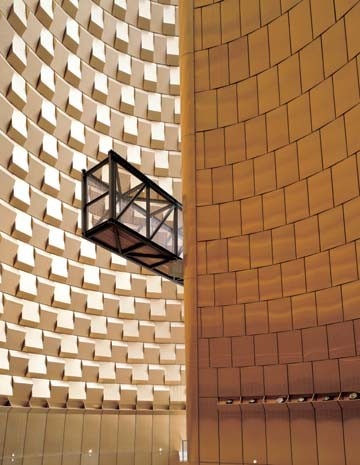
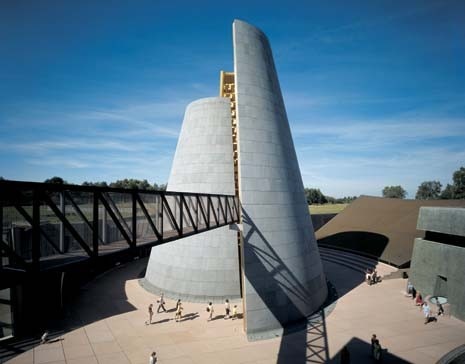
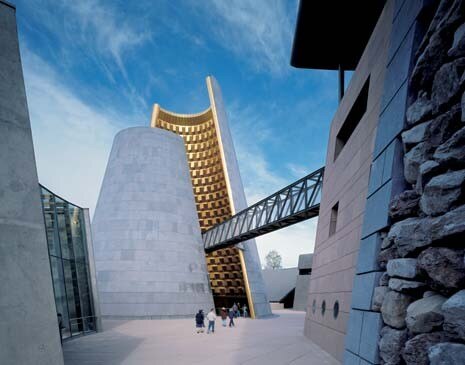
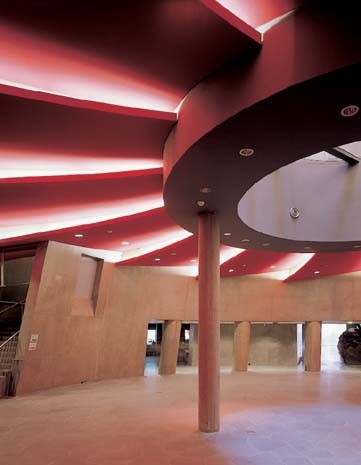
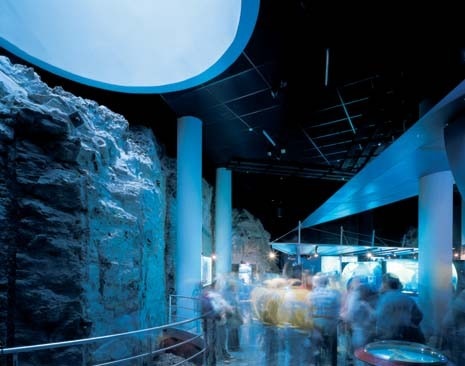
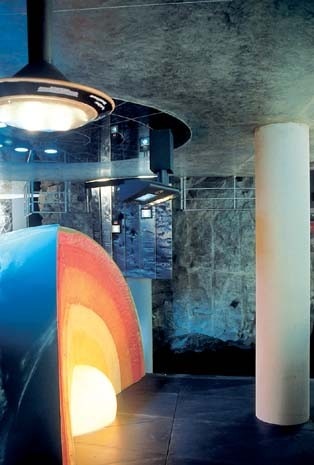
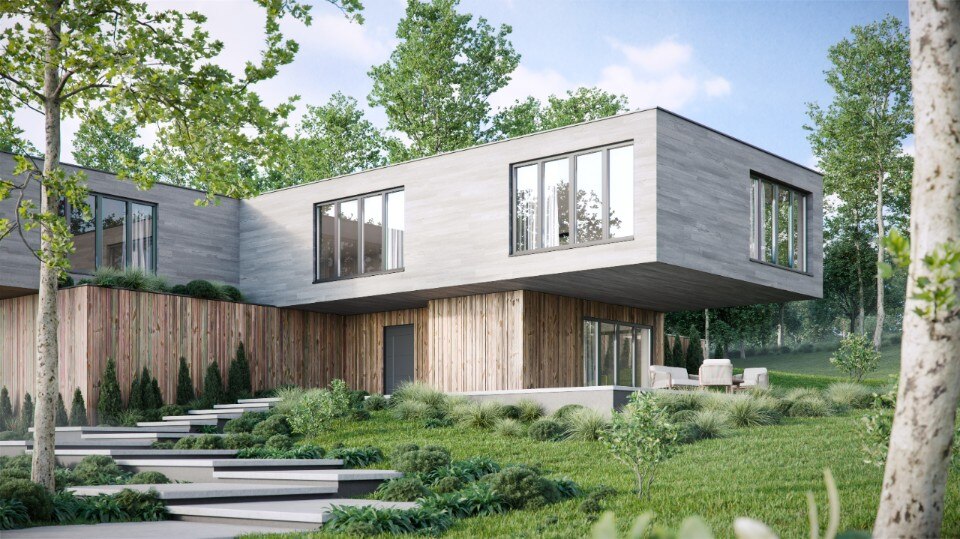
With Titano, design meets performance
The Titano aluminium range by Oknoplast continues to stand out thanks to its high-performance and minimalist design — especially when combined with the Lunar Square handle.


